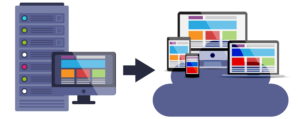Why Software Defined Printing can no longer be ignored

Software defined printing tasks are every bit as significant as networking and data management.
Software Defined Enterprises may be the holy grail for many of today’s pioneering Chief Information Officers. But, while our networking, storage and data centre solutions are enjoying a new lease of life decoupled from hardware constraints – and given the fluidity of virtualization – our printing tasks are too often being neglected. But this is a mistake: software defined printing will improve the efficiency of your enterprise in the most fundamental ways.
Movement into the public cloud for IT solutions is the go-to option for many CIOs hoping to streamline their processes. Yet contrary to this over-arching trend towards public options, many enterprises have discovered that the most effective – and elegant – solutions for day-to-day business tasks are software innovations that can be implemented in the private cloud whether that is on-premises or with services like Microsoft Azure, Amazon AWS or independent MSPs.
Virtualization, and the era of the ‘software-defined everything’ (SDE) is very much upon us. And, as businesses increasingly shift their IT focus towards software processes that meet their core objectives, budgets and acquisitions are targeting new areas of infrastructure which provide greater dynamism, scalability and at the lowest costs. Responsiveness in business is seen as the key to retaining relevance in competitive markets: having the facilities and the functionality to adapt your operations as your goals evolve is becoming the priority.
Don’t let Printing Tasks Hold Back Your Business
And yet, one of the key areas of enterprise where the software-defined revolution could bring both cost and logistical benefits is currently being overlooked by the majority of CIOs: namely, the delivery of its printing tasks. This neglect remains somewhat curious, if only for the reason that conventional printing solutions have long been known to create more problems than answers – as many an overstretched IT operative will tell you.
The current printing solution for enterprises is characterized by compromise: negotiating the limitations of systems, and solving problems on an ad hoc basis, as they arise. The following may present an all-too-familiar picture: every individual printing environment requires its own specific drivers. None of your printers – nor any other operating system, application or device that is attempting to connect to those printers – is guaranteed to be compatible with any of the other networked devices. The almost infinite permutations of hardware and driver configurations within your system mean solutions – if they exist – are discovered through trial and error. And this is before you have even considered introducing the human element.
It is then necessary to configure individual accesses and permissions for personnel; manage the destination and the distribution of tasks between printing environments; and all the while managing your security systems for remote workers and off-site points of access. It is hardly a situation conducive to efficient workflows, nor for instilling confidence in your print facilities when they are needed most.
Software Defined Printing for Dynamic Enterprise
So let us look at how Software defined printing is providing business with the virtualization of printing tasks and how this is changing the difficulties illustrated in the situation above into something more intuitive and easier to maintain.
With virtualization, your devices can finally communicate. Users are able to access the full compliment of printing options and facilities at their disposal – and from a single interface that is familiar across all platforms. Similarly, administrators are able to manage processes from a single point of oversight: providing authorizations and access as well as the routing or tasks.
This streamlines your printing setup and reduces the drag on resources: software-defined printing can reduce bandwidth consumption by more than 90 percent with the correct configurations, providing a faster, more reliable service.
Finally, you can bring true agility to your organization. You have a printing solution in place that will support and adapt to the changing processes of your software defined enterprise. Implement SaaS, DaaS, and PaaS features for your business, and its objectives evolve.
In short, what you get with a software defined printing service is the return of printing to its intended state: a functioning, reliable and easy to use capability, which requires virtually no troubleshooting or wasted hours through ongoing supervision and management. And – when you look at it that way – software defined printing tasks are every bit as significant as networking and data management. Your enterprise is only as efficient as its lowest-performing area. Don’t allow that bottleneck to be your printing tasks.




